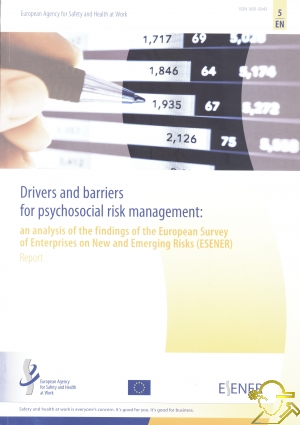 |
 |
 |
European Agency for Safety and Health at Work
|
Book : European Agency for Safety and Health at Work Author : * -- Language : English Library : Health-Safety-Environment ISBN : 978-92-9191-837-9 Publish Date : 00 2012 Publisher : -- Book Type : Periodical Book Number : 8351 |
 |
INDEX
Foreword 7Executive Summary 9
Introduction 11
1. Psychosocial risks: prevalence, impact and management 13
1.1. Definitions 13
1.2. Prevalence 14
1.3. Impact 14
1.4. The psychosocial risk management process at enterprise level 15
2. The policy context of psychosocial risk management in Europe 17
2.1. Regulatory standards 18
2.2. National regulatory structures and systems 18
2.3. Non-binding/voluntary standards 21
2.4. National case study examples 23
2.5. Conclusions -the policy context 32
3. Translation of policy into practice: drivers and barriers for psychosocial risk management
at the enterprise level 33
3.1. Enterprise characteristics 33
3.2. The orgarnisational context 35
3.3. Conclusions 38
4. Conceptual framework and research questions 40
4.1. Conceptual model 40
4.2. Variables and scales 40
4.3. Identifying variables 42
5. Data analysis 44
5.1. Analysis model 44
5.2. Analysis methods 44
6. Findings 48
6.1. Key drivers for psychosocial risk management 48
6.2. Key barriers for psychosocial risk management 52
6.3. Summary: management of psychosocial risks 57
6.4. Needs for support 59
6.5. National context of psychosocial risk management 60
7. Discussion and conclusions 64
7.1. Discussion on drivers for psychosocial risk management 64
7.2. Discussion on barriers for psychosocial risk management 65
7.3. Conclusions 66
8. References 70


